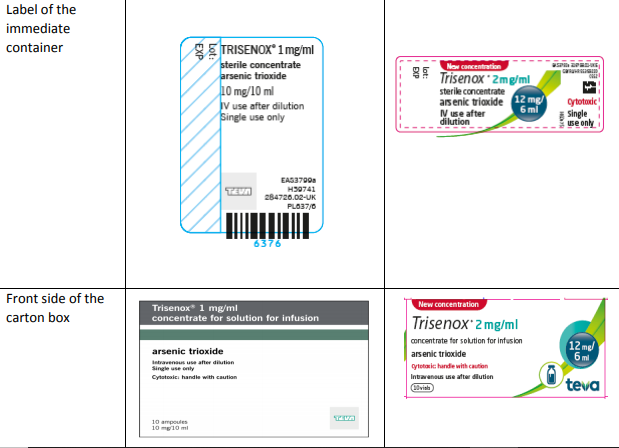Arsenic trioxide is a chemotherapeutic medication used in the treatment of newly diagnosed low-to-intermediate risk acute promyelocytic leukaemia (APL) and relapsed/refractory APL characterized by the presence of leukaemia/retinoic-acid-receptor-alpha (PML/RAR-alpha) gene. The initial approved formulation available in market for arsenic trioxide is 1 mg/ml single-use 10 ml of glass ampoule (This formulation comprises 10 mg of arsenic trioxide).
Teva Pharmaceuticals, the marketing authorization holder for this medicine with the brand name Trisenox, has released another formulation with new concentration of 2 mg/ml single-use 6 ml vial (comprising 12 mg of arsenic trioxide), replacing the former concentration.
These two formulations co-exist in the current market till the completion of replacement. Here, there is a significant possibility of medication errors, which could lead to either overdosing or under dosing. Teva pharma released a direct healthcare professional communication (DHPC) in agreement with the European Medicines Agency and the Health Products Regulatory Authority (HPRA) to alert healthcare professionals on these potential medication errors with arsenic trioxide.
Risks associated with medication errors:
Overdosing: Administering arsenic trioxide more than the recommended dose could cause potentially fatal outcomes with the following adverse events:
- Massive bleeding resulting from thrombocytopenia
- Severe infections, sepsis, and septic shock from severe leukopenia
- Cardiac arrest from QTc prolongation
- APL differentiation syndrome
- Intracerebral bleeding or ischemic myocardial infarction from hyperleukocytosis
- Potential acute kidney injury or renal failure from enhanced nephrotoxicity
- Potential hepatic failure from enhanced elevations in liver transaminases, bilirubin, and gamma-glutamyl transferase.
Under dosing: Administration of dose less than the recommended dosage could lead to lack of drug efficacy or suboptimal response to therapy which results in possibility of resistance to the cancer chemotherapy with a reduced clinical response.
Measures for minimizing risk of medication errors:
Be aware of existence of two formulations with different concentrations of arsenic trioxide which could lead to mix-up between two products resulting in medication errors for overdosing and under dosing possibilities described above.
In order to distinguish these two products, the respective packages have distinctive features as shown below:

TRISENOX (arsenic trioxide) – Two different concentrations
Every medicinal product has both benefits and risks. There is no single pharmaceutical product which is completely free from side effects/adverse reactions. All health care professionals and consumers of pharmaceutical medicinal products are encouraged to be aware of this fact and observe/monitor for any possible adverse events, reactions, medication errors, or quality complaints of medicinal products and report the same to your respective national health authority. This would accumulate safety evidence for medicinal products which in turn help health authorities to take regulatory actions at the earliest possibility for a better patient safety.